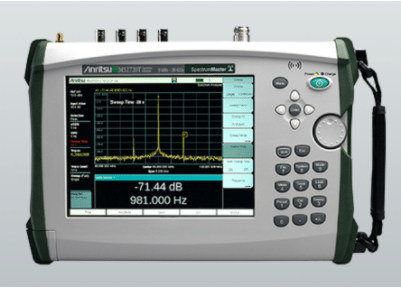All four U.S. carriers are in a speed race to deploy gigabit LTE networks to push the limits of user experience ahead of the standardization and commercialization of 5G. From the macro layer to the red-hot in-building wireless market, the line between wireless and wired networks and licensed and unlicensed spectrum is blurring. This is good for turf vendors in that new network infrastructure needs to be deployed and existing sites need to be upgraded. But this network evolution could be hindered by a lack of certified, highly-skilled technicians needed to do everything from test fiber and emulate base station transmissions to hunting out and getting rid of RF and microwave interference.
As carriers and their ecosystem of partners continuously invest in better networks, cost is key. A smooth, cost-effective deployment is done right the first time. However, given the increasing complexity of modern telecom networks, that’s not always going to be possible. In addition to adding cost and increasing project timelines, interference in RF and microwave systems can impact coverage and bandwidth. From the carrier perspective, that equates to customer complaints and potential churn. For turf vendors, it means more truck rolls, more time on site and the potential for a cascading effect that can throw off work schedules and impact the ability to bid on upcoming work.
In addition to helping educate the workforce with its original web series Signal Hunters, which takes a look at novel and innovative approaches to interference hunting, leading test and measurement company Anritsu is helping prepare field technicians, and the vendors that hire them, to quickly and efficiently find and mitigate interference through a 3-day, hands-on, instructor-led course called RF & Microwave Interference Analysis Certification.
This training course covers a review of RF and microwave basics and teaches attendees how to measure channel power, occupied bandwidth, adjacent channel power, field strength and carrier to interference ratio. The course also teaches best practices for determining if interference is causing a problem and how to locate it. Most importantly, students will learn how to resolve the issue and review a number of real-world case study examples. The training culminates with a live interference hunt for a hidden transmitter that serves as a practical final exam.
Another important aspect of the training session is the opportunity to get hands-on practice with industry leading tools like the Spectrum Master MS2720T, which features measurement options for LTE (FDD and TDD), CDMA, W-CDMA, WiMax and GSM networks in frequencies ranging from 9 kHz to 9 GHz, 13 GHz, 20 GHz, 32 GHz and 43 GHz, plus many other features covered in the training.

“Turf vendors and field techs need training that speaks to the work they are performing daily.” Shawn Kelly, Anritsu customer training programs manager, told RCR Wireless News. “And, oftentimes, crews need to be certified to bid on projects and submit official closeout packages to the carriers. Investing in the right tools and training reduces costs, speeds up work and helps turf vendors stand out in a competitive market.”
The next training session is set for Sept. 6-8 in Pine Brook, N.J. Click here to learn more about the three day RF and microwave interference analysis certification program and register to attend.

